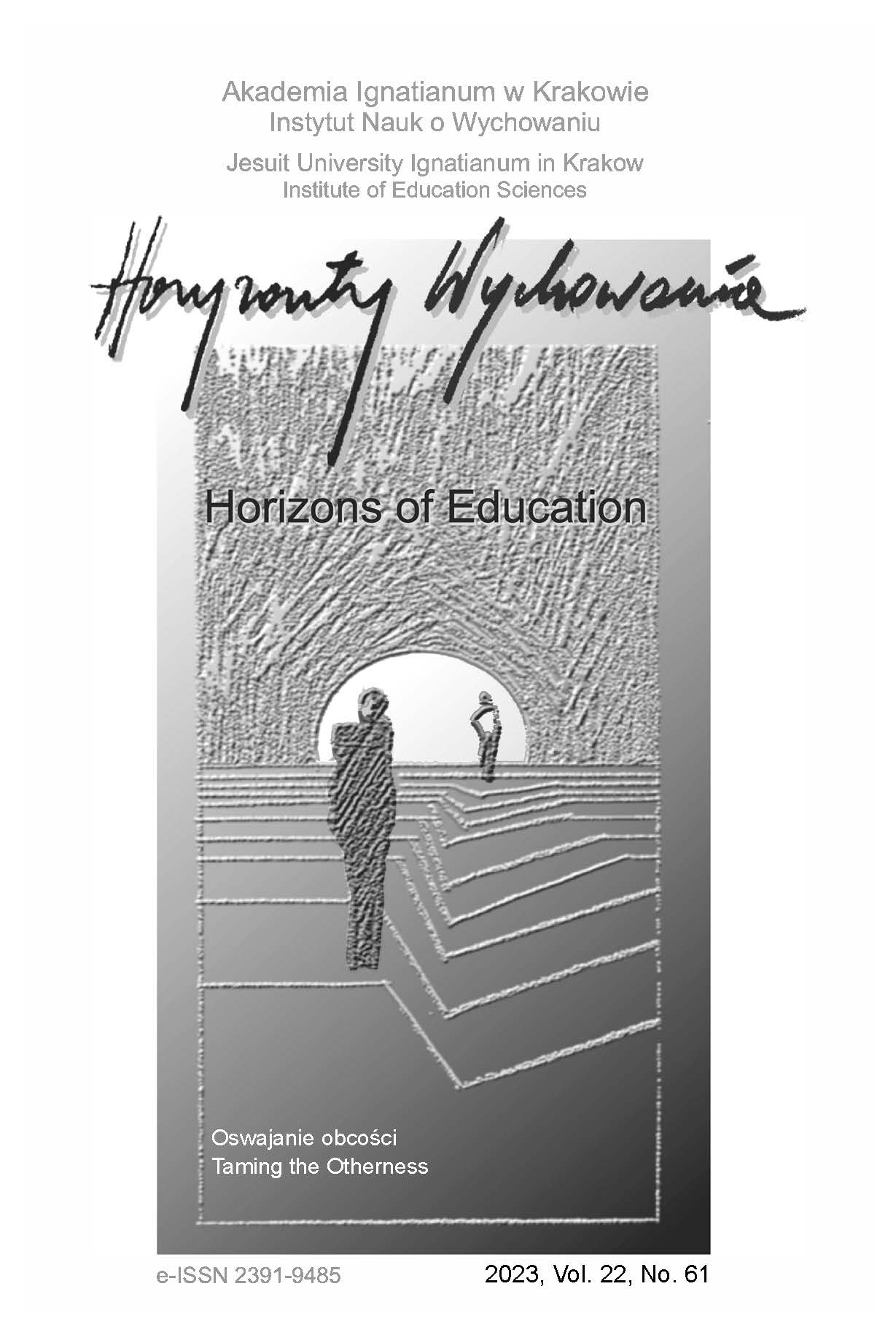The Others in the Linguistic Picture of the World of Polish Students: Linguistic Reflection
Abstract
RESEARCH OBJECTIVE: The aim of article is an attempt at reconstructing the images of other, foreign and enemy, fixed in the linguistic picture of the world of students.
THE PROBLEM AND RESEARCH METHODS: The research problem is placed in the context of the discussion on the cultural meanings contained in the terms: other, foreign, enemy.
THE PROCESS OF ARGUMENTATION: The argumentation began with the justification of selecting the research issues with an indication of the research assumptions of imagology as a theoretical and methodological approach to the analysis of the concept of otherness/strangeness/hostility in the context of the concept of identity. Secondly, both the research methodology applied and the criteria for classifying and describing the empirical material were discussed. The third part of the study is the analysis of the research results and the conclusions.
RESEARCH RESULTS: On the basis of the analysis, it can be claimed that the terms other, alien and enemy hide many meanings and universal contents. From the perspective of linguistic analyses, the dual nature of the concepts discussed is particularly interesting. The denotative nature, multifaceted grounded is described in the dictionaries of the Polish language, it is a concrete reference to reality. The connotative one results from the fact that the features of the analysed objects are transferred to a wide range of facts from social life, and therefore, the symbolic relationship between the objects of the external world and the ideas about them functioning in the minds of the respondents ceases to be unambiguous.
CONCLUSIONS, INNOVATIONS, RECOMMENDATIONS: Perceiving and experiencing the world according to the dichotomy of one’s own – other/foreigner/enemy is typical for each of us. More and more frequently, however, the concepts of the other/foreigner/enemy are used for propaganda purposes.
References
Baran, M. i Boski, P. (2016). Czy „Inny” zawsze musi być obcy? Wpływ dystansu kulturowego na postawy etnicznych Polaków wobec osób czarnoskórych i ich kategoryzację. Psychologia Społeczna, 11(2)37, 136-159.
Bartmiński, J. (2006). Zmiany w rozumieniu nazw wartości w okresie transformacji ustrojowej w Polsce. W: J. Bartmiński, Język. Wartości. Polityka. Zmiany w rozumieniu nazw wartości w okresie transformacji ustrojowej w Polsce. Raport z badań empirycznych (s. 8-35). Wydawnictwo UMCS.
Bauman, Z. (1995). Wieloznaczność nowoczesna, nowoczesność wieloznaczna (J. Bauman, tłum.). Wydawnictwo Naukowe PWN.
Butler, J. (2011). Ramy wojny. Kiedy życie godne jest opłakiwania (A. Czarnacka, tlum.). Instytut Wydawniczy Książka i Prasa.
Fleischer, M. (2003). Polska symbolika kolektywna. Dolnośląska Szkoła Wyższa Edukacji Towarzystwa Wiedzy Powszechnej.
Gadamer, H.-G. (1976). Hermeneutyka (B. Baran, tłum.). Życie i Myśl, 4, 137-150.
Gadamer, H.-G. (1992). Dziedzictwo Europy (A. Przyłębski, tłum.). Fundacja Aletheia, Wydawnictwo Spacja.
Gawarkiewicz, R. (2011). Komunikacja międzykulturowa a stereotypy. Polacy – Niemcy – Rosjanie. Wydawnictwo Naukowe Uniwersytetu Szczecińskiego.
Gawarkiewicz, R. (2020). Polsko-, niemiecko- i rosyjskojęzyczny obraz „innego” i „obcego”. Analiza porównawcza pól asocjacyjnych. Studia Rossica Posnaniensia, 45(2), 147-162.
Gawarkiewicz, R., Pietrzyk, I. i Rodziewicz B. (2008). Polski słownik asocjacyjny z suplementem. PRINT Group.
Jarymowicz, M. (2003). O utajonych przejawach atrakcyjności i awersyjności podobieństw JA – INNI. Przegląd Psychologiczny, 46(3), 237-252.
Karwatowska, M., Litwiński, R. i Siwiec, A. (red.). (2018). Obcy/Inny – propozycje aplikacji pojęciowych. Wydawnictwo UMCS.
Nowicka, E. (1990). Swojskość i obcość jako kategorie socjologicznej analizy. W: E. Nowicka (red.), Swoi i obcy (s. 5-53). Instytut Socjologii Uniwersytetu Warszawskiego.
Szwed, R. (2003). Tożsamość a obecność kulturowa. Studium empiryczne na temat związków pomiędzy tożsamością społeczno-kulturową a stosunkiem do obcych. Wydawnictwo KUL.
Waldenfels, B. (2002). Topografia obcego. Studia z fenomenologii obcego (J. Sidorek, tłum.). Oficyna Naukowa.
Copyright (c) 2022 HORIZONS OF EDUCATION

This work is licensed under a Creative Commons Attribution-NoDerivatives 4.0 International License.
Authors who publish in this journal agree to the following terms:
- Authors retain the copyright to their work while granting the journal the right of first publication. The work will be simultaneously licensed under a CC BY-ND license, which permits others to share the work with proper credit given to the author and the original publication in this journal.
- Authors may enter into additional, non-exclusive agreements for the distribution of the published version of the work (e.g., posting it in an institutional repository or publishing it in another journal), provided that the original publication in this journal is acknowledged.
We allow and encourage authors to share their work online (e.g., in institutional repositories or on personal websites) both before and during the submission process, as this can foster beneficial exchanges and lead to earlier and increased citations of the published work. (See The Effect of Open Access). We recommend using any of the following academic networking platforms:





